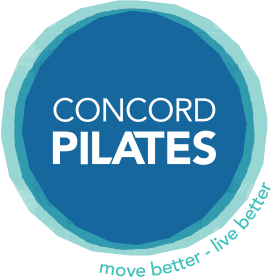What Is Pilates (and Why Should I Try It, Anyway?)
Pilates is a functional fitness system that offers a total mind-body workout. Exercises are focused on controlled, proper movements aimed at conditioning the whole body and maintaining health.
The idea behind Pilates, which was developed by German born Joseph Pilates and brought to the US in 1925, is the integration of the 6 Principles: Centering, Concentrating, Control, Precision, Breathing, and Flow.
If you’ve never tried Pilates (and you’re reading this!) you’ve probably wondered what it’s all about and whether it would be good for you. It might seem as though it’s just another form of exercise, and maybe you don’t know how this one might be any different, or if it’s going to help you. Or you might have tried it but didn’t seem to get a lot out of it.
The Pilates Method lies at the intersection of physical therapy and sports-specific instruction (such as that given by coaches). It shows you how to improve your movement so you feel better and move better all the time, and it does that by paying attention to detail.
The big difference between Pilates and any other form of exercise is in the precision of movement. The definition of precision (according to Google) is “the quality, condition, or fact of being exact and accurate.”
The Pilates exercise might look similar to an exercise that you’ve already tried, but by using more precision in how you place the body and regulate the movement, you will benefit more from each exercise, or benefit in unexpected ways. In precision is where the power of Pilates lies. In other words, precision equals intensity and results. It also means risk reduction and longevity.
I’m currently working with a cyclist client who suffers from knee pain. His fellow cyclists have pointed out to him in the past that his left heel turns outward in an awkward way when he rides. This small movement has been going on for years, and now his knees are screaming at him to pay closer attention. Through the precision of Pilates, we have been working on correcting this movement pattern so that he can continue doing the sport he loves, pain free, for years to come.
When we don’t correct existing movement imbalances, our bodies will eventually force us to pay closer attention by sending us pain. Sometimes a lot of pain. Why not start working to align and heal the body now, when you’re feeling great instead of when it’s too late? It’s possible that some of the damage that you’ve created may not be reversible, but if you start right now you will be much healthier for much longer!
